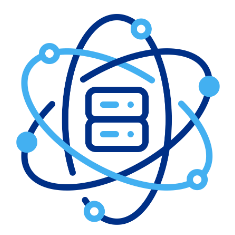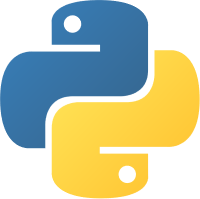21
DecData Cleaning in Data Science
Introduction
Finding, repairing, and eliminating any errors, inconsistencies, or inaccuracies is part of Learn Data Science as well as data cleaning in data science. This is done to ensure that the data is accurate, complete, and reliable. Data cleaning is a vital step in the data science process because it ensures that the data used for analysis or machine learning is of high quality. Poor-quality data can result in inaccurate results that can seriously affect how decisions are made. To preserve the integrity and dependability of the data utilized in your analyses & decision-making processes, it is crucial to pay attention to data cleansing and continuously improve your data science abilities through resources like Data Science Online Training.
What is Data Cleaning in data science and the importance of data cleaning?
Finding and fixing data mistakes, inconsistencies, and inaccuracies is known as data cleaning in data science. It guarantees the good quality of the data utilized for analysis or machine learning. Data entry problems, missing data, and inconsistent formatting are all addressed by cleaning the data.
- Inaccurate results from using data that is of poor quality can have serious ramifications for decision-making.
- Inaccurate data can result in inaccurate conclusions, which can cost firms money.
- Relying on incorrect data might result in dissatisfied customers, lost money, and possible legal problems.
- To ensure accurate results and make wise judgments, data cleaning is essential.
The Data Cleaning Process - Steps and Techniques

- Data Gathering: The process of cleansing data begins with data collecting. To do this, all the data that has to be cleaned up and kept in one place must be gathered. The information can be gathered from a variety of places, including social media platforms, databases, and spreadsheets.
- Data Evaluation: Finding flaws, inconsistencies, or inaccuracies in the data is the goal of data evaluation. Several methods, including statistical analysis and data visualization, can be used to accomplish this. Data assessment, which aids in identifying any problems that require attention, is a crucial phase in the data cleansing process.
- Cleaning of Data: Correcting any flaws, inconsistencies, or inaccuracies in the data is known as data cleaning in data science. Various methods, including data imputation and data transformation, can be used to accomplish this. Data cleaning guarantees that the data utilized for analysis or machine learning is of the highest quality, making it a key stage in the data cleaning process.
- Verification of Data: Verifying data entails making sure it has been accurately cleansed and is accurate. This can be accomplished using a variety of methods, including data sampling and data profiling. Because it assures that the data used for analysis or machine learning is accurate, data verification is a crucial stage in the data cleaning process.
Read More - Data Science Interview Questions
Data Cleaning Tools and Methods for Efficient Cleaning
- OpenRefine: An effective way to clean and alter data is to utilize the open-source, free tool called OpenRefine. Data standardization, duplication removal, and even data reconciliation are all possible using OpenRefine.
- Trifacta: A commercial data cleansing technology called Trifacta can be used to effectively clean and transform data. Trifacta is an excellent tool for handling enormous datasets because it can automate data cleaning.
- Regular Expressions: A set of rules called regular expressions can be used to find and replace patterns in data. By looking for specified patterns, like dates or email addresses, as well as replacing them with the appropriate values, regular expressions can be used to clean up data.
How to Measure the Success of Data Cleaning?
- Profiling of data: Data profiling entails examining the data to spot trends, connections, and discrepancies. Data profiling can be used to find any problems that need to be fixed, such as missing data or inconsistent formatting.
- Sampling of data: To assess the quality of the data, a subset of the data must be chosen. A useful method for assessing the quality of sizable datasets is data sampling.
- Visualization of data: Graphically presenting data, such as charts or graphs, is known as data visualization. Data visualization is a useful tool for assessing the quality of the data since it can be used to find patterns and links in the data.
Common Data Quality Issues
- Absence of Data: One of the most prevalent problems with data quality is missing data. Data imputation methods, such as mean imputation or regression imputation, can be used to fill in the gaps left by missing data.
- Data Duplication: Data deduplication techniques, such as fuzzy matching or rule-based deduplication, can be used to deal with duplicate data.
- Unreliable Data: Data standardization methods, such as data transformation or regular expressions, can be used to address inconsistent data.
The Impact of Data Cleaning on Data Analysis and Machine Learning
- Data cleaning has a significant impact on machine learning and data analysis.
- Decision-making procedures run the danger of producing erroneous results as a result of poor data quality.
- Data cleaning ensures high-quality data for machine learning and analysis, producing precise findings for well-informed decision-making.
- Clean data is essential for machine learning since it guarantees the precision of the algorithms that are utilized.
- The quality of the training data is crucial to machine learning algorithms.
- Machine learning algorithms' accuracy can suffer from inaccurate data.
- To preserve the reliability and efficiency of machine learning operations, data cleaning is essential.
Examples of Effective Data Cleaning
- Airbnb: To guarantee the accuracy of the data used for price and availability, Airbnb employs data cleaning. Airbnb gathers information from a variety of sources, including hosts, visitors, and outside service providers. Data cleansing guarantees the accuracy of the data used for pricing & availability, improving the consumer experience.
- Uber: Uber uses data cleaning to guarantee the accuracy of the information used to assess driver performance & rider safety. Uber gathers information from a variety of sources, including drivers, riders, and other companies. To improve customer experiences, data cleansing makes sure that the information used to assess driver performance & rider safety is correct.
Best Practices for Data Cleaning
- Keep track of the data-cleaning process: Data-cleansing procedures should be documented to make sure they are repeatable and auditable. The transparency of the data cleansing procedure is further ensured through documentation.
- Standardize Data: Data can be simply analyzed and made consistent by standardizing it. When data is standardized, it is made sure to be in the right format and to adhere to predetermined criteria.
- Make Use of Data Cleaning Tools: The efficiency and effectiveness of the data cleaning process are ensured by the use of data cleaning technologies. Tools for data cleaning can automate the procedure, increasing its effectiveness.






